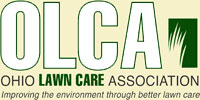What Are the Best Seeds for Frost Seeding?
Frost seeding is a cost-effective method to improve pastures, hayfields, and food plots by broadcasting seeds over frozen ground in late winter or early spring. The natural freeze-thaw cycle helps work the seeds into the soil for germination. This method is particularly useful in regions where traditional planting methods may be challenging due to soil conditions or weather limitations. Selecting the right seeds is crucial for success. Let’s talk about the best grass and legume seeds for frost seeding, key selection factors, and preparation steps.
Best Grass Seeds for Frost Seeding
Choosing grass species with strong germination rates and cold tolerance is essential. Top choices include:
- Orchardgrass – Fast-growing and adaptable, excellent for pastures when mixed with legumes. It is highly palatable for livestock and establishes quickly.
- Timothy Grass – Ideal for hay production, thrives in cooler climates, and provides excellent forage quality, particularly for horses and cattle.
- Bromegrass – Deep-rooted, great for erosion control and long-term pasture improvement. It is a reliable option for areas prone to soil degradation.
- Kentucky Bluegrass – Spreads through rhizomes, providing dense ground cover and preventing soil erosion. It is commonly used in both grazing systems and lawns.
- Fescue – Hardy and drought-resistant, effective in pastures and erosion control. Tall fescue varieties can withstand heavy grazing pressure.
Best Legume Seeds for Frost Seeding
Legumes enhance soil fertility by fixing nitrogen. Recommended options include:
- Red Clover – Fast-growing, drought-tolerant, and excellent for forage. It provides an energy-rich feed source for livestock and helps improve soil health.
- White Clover – Hardy and withstands heavy grazing. It spreads aggressively and contributes to nitrogen enrichment in the soil.
- Alfalfa – High-protein forage, requires favorable soil conditions but offers excellent yields when properly managed.
- Birdsfoot Trefoil – Thrives in poorly drained soils, providing nutritious forage. Unlike alfalfa, it does not cause bloat in livestock.
- Hairy Vetch – Suppresses weeds and fixes nitrogen, ideal for cover cropping. It is commonly used in regenerative agriculture to improve soil structure.
Factors to Consider When Choosing Seeds
To maximize success, consider these factors:
- Soil Conditions – Conduct a soil test to determine pH and nutrient levels. Most grasses and legumes have specific soil requirements for optimal growth.
- Climate Suitability – Select species adapted to local conditions. Some species are better suited for colder climates, while others thrive in warmer regions.
- Seed-to-Soil Contact – Opt for seeds that germinate with minimal soil coverage. Frost seeding relies on natural soil movement, so seed selection is critical.
- Germination Rate – Higher rates improve establishment success. Checking seed labels for germination percentages can help with planning.
- Intended Use – Choose seeds based on goals such as forage, hay, or soil health. If improving livestock feed quality, select high-nutrient species.
How to Prepare for Frost Seeding
Follow these steps for optimal results:
- Assess Existing Vegetation – Ensure selected species complement the current stand. Avoid overseeding areas with highly competitive existing vegetation.
- Conduct a Soil Test – Identify deficiencies and make necessary amendments to enhance seed success.
- Choose the Right Timing – Seed when the ground is frozen but thaws during the day. Late winter or early spring is the ideal period.
- Prepare the Seedbed – Graze or mow vegetation to improve seed contact. Overgrowth can prevent seeds from reaching the soil surface.
- Broadcast the Seeds – Use a spreader for even distribution, ensuring consistent coverage.
- Monitor Weather Conditions – Favorable freeze-thaw cycles enhance seed incorporation. The natural movement of the soil helps bury the seeds effectively.
- Evaluate and Maintain – Monitor germination and adjust management as needed. Supplementing with additional seed if necessary can help fill gaps in coverage.
Frost seeding is an efficient way to enhance pastures and hayfields, particularly in areas where traditional planting may be difficult. Selecting the right seeds, such as orchardgrass, timothy grass, red clover, and alfalfa, is key to success. Considering soil conditions, climate, and intended use also helps optimize seed selection. Proper preparation, including soil testing and careful timing, further increases the chances of a thriving frost-seeded field. With the right approach, frost seeding improved forage production, soil health, and land productivity. Whether aiming to enhance livestock grazing areas or improve soil quality, frost seeding is a reliable and cost-effective method for long-term land management.
Don’t wait for spring to start seeing greener, thicker turf. Contact Portage Turf and Pest today to schedule your frost seeding service in Hudson, North Canton, Aurora, Twinsburg, or Kent.






